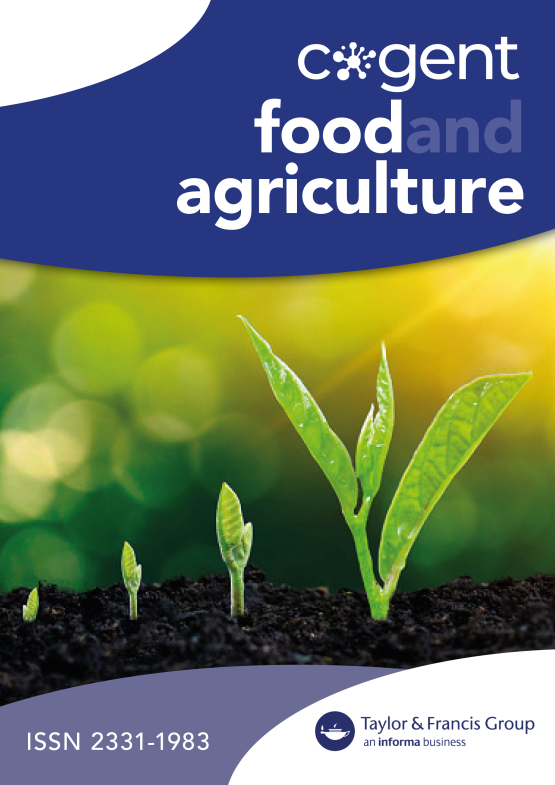Submit a Manuscript to the Journal
Cogent Food & Agriculture
For an Article Collection on
Camel Milk, Meat, and Urine Products: Nutraceutical and Functional Properties
Manuscript deadline
01 August 2024

Article collection guest advisor(s)
Professor Abdalbasit A. Mariod,
Faculty of Science, University of Jeddah, Jeddah, Saudi Arabia
Camel Milk, Meat, and Urine Products: Nutraceutical and Functional Properties
Cogent Food & Agriculture is pleased to invite you to submit your research to the upcoming Article Collection “Camel Milk, Meat, and Urine Products: Nutraceutical and Functional Properties” organized by the Guest Advisor, Professor Abdalbasit A. Mariod.
Camel products are a vital source of daily life for many people around the world. They have long since been used for a variety of functions including as a means of daily sustenance and therapy.
Camel milk is the basic daily food for many Bedouins in many areas, and aside from being a healthy, complete, and balanced food, it also contains many therapeutic benefits. It has been noted that people who drink camel milk since their childhood are healthier and younger than others and are characterized by a flowing vitality. The most important advantages of camel milk over other milks is its possession of compounds of a protein nature such as lysozymes, anticoagulants, antitoxins, antibacterials, inhibitory bodies, etc., and these antibiotics possess antibacterial properties, and during a specific period of time these bodies impede the proliferation of microorganisms in camel milk. Camel milk can also be used to treat dropsy, jaundice, spleen problems, tuberculosis, asthma, anemia, and hemorrhoids. It has also proven to be useful in treating tuberculosis and other respiratory diseases. As a result, special clinics have been established in which camel milk is used for such treatments.
Camel meat has distinctive characteristics, as it is a good source of protein. It contains low levels of muscle fat and a relatively high percentage of polyunsaturated fatty acids, which makes it an ideal meat for people with health problems, such as diabetes and high cholesterol, as well as for health-conscious consumers.
Camel urine, especially virgin camel urine, was used as a disinfectant for washing wounds and ulcers. It is also used for hair growth, strengthening and reproduction, and preventing hair loss, as well as for treating dandruff and dandruff. It is said that camel blood can heal people from some malignant diseases.
In this regard, this Article Collection aims to shed light on camel milk, meat, and urine products, and their chemistry, nutritional characteristics, and functional properties. We welcome Original Research and Review Articles on the following subtopics:
- Biochemistry of Camel Milk
- Biochemistry of Camel Meat
- Nutritional and Functional Properties of Camel Milk and Meat
- Nutritional Composition, Health Benefits of Camel Urine
- Processing of Camel Meat Products
Please review the submission instructions below prior to submitting an abstract and/or manuscript.
Article Collection Guest Advisor
Professor Abdalbasit Mariod is the founder of the Ghibaish College of Science & Technology in Ghibaish, Sudan 2017. He is also a full Professor at the Department of Biology, Faculty of Science, University of Jeddah, Saudi Arabia. He obtained his Bachelor of Food Science and Technology at Alexandria University, Egypt and a Masters of Food Engineering at Gezira University, Sudan. He earned his Ph.D. in Natural Sciences at Münster University, Germany (2005).
Professor Mariod was considered for inclusion in WHO'S WHO in the World, 28th Edition (2011) by Marquis Who’s Who Publications May 2010. Professor Mariod has also worked as Visiting Professor in IBS/UPM Malaysia 2008-2010 and as a Senior Research Fellow in the program of Bioactive Compounds. He also obtained TWAS-UNESCO ASSOCIATESHIP (2010-2013) Ref.3240230898 at the Research Centre for Chemistry at the Indonesian Institute of Science (RCChem-LIPI), Bandung 40135, Indonesia.
Prof. Mariod was classified among the top 2% global highly cited researchers published in PLOS Biology by Stanford University, USA in 2020 and 2022 respectively. He is also the winner of many awards including the University of Jeddah Excellent Researcher of 2023 and the Abdul Hameed Shoman Award for Arab Researchers 2021.
Benefits of publishing open access within Taylor & Francis
Global marketing and publicity, ensuring your research reaches the people you want it to.
Article Collections bring together the latest research on hot topics from influential researchers across the globe.
Rigorous peer review for every open access article.
Rapid online publication allowing you to share your work quickly.
Looking to Publish your Research?
Find out how to publish your research open access with Taylor & Francis Group.
Choose open accessSubmission Instructions
All manuscripts submitted to this Article Collection will undergo desk assessment and peer-review as part of our standard editorial process. Guest Advisors will not be involved in peer-reviewing manuscripts unless they are an existing member of the Editorial Board.
Please review the journal scope and author submission instructions prior to submitting a manuscript.
The deadline for submitting manuscripts is 1st August 2024. Please be sure to select the appropriate Article Collection from the drop-down menu in the submission system and to include any discount codes before you submit as these will not be applied retrospectively.
Please contact Ruby Ru, Commissioning Editor, with any queries and discount codes regarding this Article Collection.
All manuscripts submitted to this Article Collection will undergo desk assessment and peer-review as part of our standard editorial process. Guest Advisors for this collection will not be involved in peer-reviewing manuscripts unless they are an existing member of the Editorial Board. Please review the journal Aims and Scope and author submission instructions prior to submitting a manuscript.